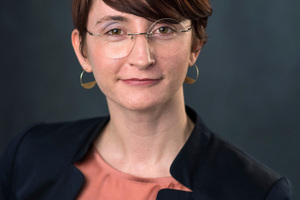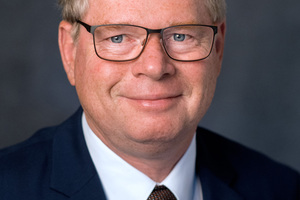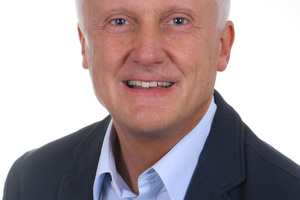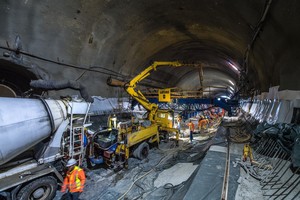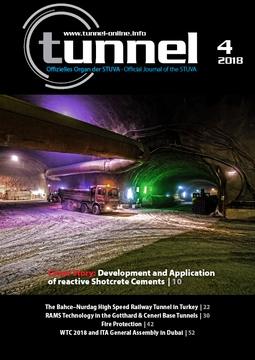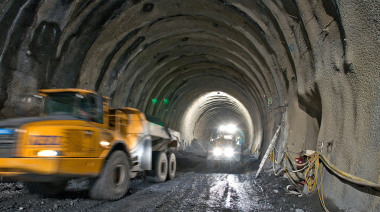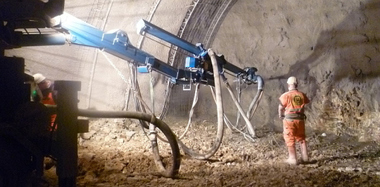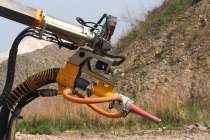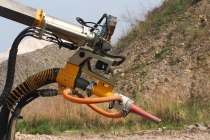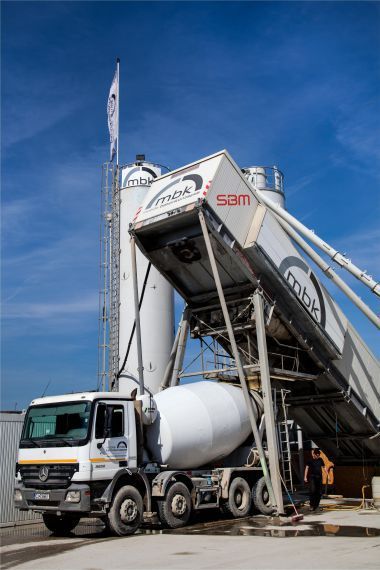Everything from a single Source, from First- to Third-Level Support
tunnel: What exactly is the task of the “Engineering & Innovation” department at HeidelbergCement?
Dr. Jennifer Scheydt: A substantial role is played by product development, which is oriented very closely to the German market. We offer solutions for genuine practical requirements on the market. Our strategic development work focuses on the sectors cement and concrete – namely for the entire German market, split into market segments. For the concrete sector for instance, relating to civil engineering or farm buildings. As far as the cement sector is concerned, we are involved for example in the market segments road construction, concrete products, ready-made parts or special foundation engineering. Each segment is looked after by a product manager, who is responsible for coordinating the requirements and ideas from his segment and transforming them into development contracts in conjunction with E&I. We want to work together with the customer for the customer. Our work is always geared to this concept.
tunnel: How do you find innovation potential – say for reactive shotcrete cement – on the market?
Dr. Jennifer Scheydt: There are three main aspects, which greatly influence the development of new products: first of all, there must be a demand on the part of the customer. Secondly, a role is played by the technological applicability just as – the third and final aspect – economy. Innovation results as the overlap.
Our superordinated target is not the marketable product as such, though: the ideal way is to become the system or rather the solution provider via the product. Towards this end, we have to offer the customer our company’s technical competences and the application-specific knowhow in addition to the efficient product – if need be in collaboration with further partners.
tunnel: How is the optimal quality of a shotcrete attained?
Dr. Klaus Felsch: Shotcrete has been used for quite some time to secure tunnels driven by mining means. In keeping with the new Austrian Tunnelling Method, today’s wet-spraying method renounces the use of accelerators containing alkalis, as they are aggressive and harmful to health. The new alkaline-free types of accelerator are, however, less effective in comparison. Accordingly, the demands on the cement rise: it must be particularly reactive.
When very good shotcrete cements are applied, the added amounts of accelerator at the shotcrete nozzle can be considerably reduced so that all in all the shotcrete is more economic. Furthermore, a good combination of reactive sprayed cement and suitable accelerator enhances the rate of advance. Larger amounts of shotcrete can be processed in a shorter time. In the case of Schelklingen shotcrete cement our department’s experts spent a long time tinkering and testing with the plant’s lab and building consultants. The outcome was a highly reactive cement, which is now used for various tunnel projects including the Herrschaftsbuck Tunnel in Rheinfelden.
tunnel: Which services does your company offer the customer on the spot?
Werner Beer: The product programme of HeidelbergCement and its divisions is very versatile. As a result, our members of staff are confronted on a daily basis with all kinds of questions and demands during consultations and sales in the field. We are equally as much in demand at construction companies or engineering or architectural offices, communal authorities, complex construction sites involving concrete technology or technically sophisticated concrete plants – for example, when special concrete mixes or particular installation methods are concerned. We are “carers”, we are always focused on our customers so that we can jointly evolve optimal solutions for their needs. Towards this end, we are backed up by our applications engineers, who carry out concrete tests on our behalf on-site and in the lab.
Consulting and sales represent an essential interface between our customers and our company: thanks to market proximity, what is required on construction sites and what planners desire is communicated within the company; at the same time, our customers are provided with technical innovations and new standards.

